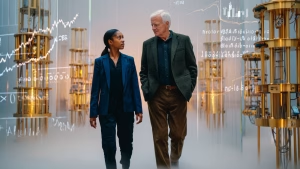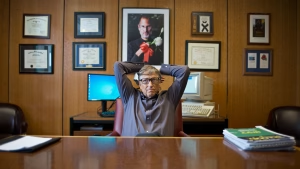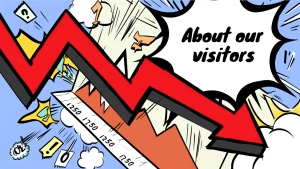Musk and Reality: The Balancing of a Dreamer and a Realist
Discover the visionary world of Elon Musk, a pioneer in technology and entrepreneurship known for his groundbreaking projects, from SpaceX to Tesla.

Introduction to Elon Musk: The Visionary
Elon Musk stands as a prominent figure in the realms of technology and entrepreneurship, distinguished by his relentless pursuit of innovation and transformative ideas. Born on June 28, 1971, in Pretoria, South Africa, Musk displayed an early affinity for technology and entrepreneurship. At a young age, he taught himself programming and created a video game, which he sold for $500. This formative experience epitomizes the traits that would later define his career: a mix of creativity, technical acumen, and an unwavering ambition to reshape the world.
Musk’s journey took him from the shores of South Africa to the halls of prestigious institutions like the University of Pennsylvania, where he earned degrees in both physics and economics. His venture into the entrepreneurial landscape began with Zip2, which was acquired for nearly $300 million. This early success would set the stage for Musk’s subsequent groundbreaking projects, including PayPal, which revolutionized online payments, and later ventures like SpaceX and Tesla.
At SpaceX, Musk’s vision transcends terrestrial boundaries with the objective of making space travel affordable and ultimately enabling human life on Mars. His ambition to colonize other planets embodies his characteristic blend of dreaming and pragmatism. Simultaneously, at Tesla, he fostered significant advancements in electric vehicles and renewable energy, challenging entrenched automotive paradigms and promoting a sustainable future. Musk’s ability to reconcile ambitious dreams with real-world applications is a testament to his visionary thinking.
As we delve deeper into Musk’s multifaceted persona, it remains imperative to explore the delicate balance he maintains between being a dreamer and a realist. This exploration will shed light on whether his audacious goals are rooted in genuine feasibility or merely optimistic imagination.
The Dreamer in Musk: Ambitious Goals and Futuristic Visions
Elon Musk stands as a quintessential dreamer, consistently setting ambitious goals that stretch the boundaries of conventional thinking. His vision for colonizing Mars encapsulates this idealism; Musk envisions a self-sustaining city on the red planet, aspiring to make humanity a multi-planetary species. This goal, while grand in scope, raises pressing questions regarding its feasibility, especially considering the technological and financial challenges involved in space exploration. Nonetheless, Musk’s vision resonates with many, as it reflects an unyielding belief in human potential and capability.
Furthermore, the introduction of the Hyperloop system highlights Musk’s drive to revolutionize transportation. This concept proposes a new mode of travel that could transport passengers at high speeds through low-pressure tubes, aiming to drastically reduce travel time between cities. Musk’s willingness to challenge existing transportation paradigms exemplifies his knack for thinking outside the box. Though still in the experimental phase, the Hyperloop idea pushes the conversation around modern transit strategies, demonstrating Musk’s penchant for marrying innovation with practical execution, albeit with an idealistic flair.
Additionally, Musk’s work with renewable energy through Tesla’s solar initiatives and electric vehicles underscores his commitment to a sustainable future. His goal of making sustainable energy accessible and economically viable speaks to a broader vision of combating climate change and reducing humanity’s carbon footprint. However, while Musk’s dreams are undoubtedly aspirational, they often provoke skepticism regarding their achievability against the backdrop of current technological constraints and market dynamics. The inherent tension between ambition and practicality in Musk’s pursuits paints a complex portrait of a visionary who operates in both realms of dreaming and doing.
The Realist in Musk: Achievements and Pragmatic Approaches
Elon Musk’s persona is often encapsulated by his visionary aspirations, yet it is his realist attributes that have enabled him to transform ambitious ideas into practical outcomes. Musk’s journey is marked by strategic planning and disciplined execution that pivot around a robust comprehension of technology and business dynamics. These qualities shine through in the numerous milestones achieved by his ventures, including SpaceX, Tesla, and Neuralink, amongst others.
SpaceX, for example, embodies Musk’s pragmatic methodology. Founded with the audacious aim of reducing space transportation costs and enabling the colonization of Mars, the company has made significant strides since its inception in 2002. One critical achievement was the successful launch and recovery of the Falcon 9 rocket, which not only demonstrated technological feasibility but also established a new standard for cost-efficiency in the aerospace industry. The successful completion of multiple missions to the International Space Station has further underscored Musk’s aptitude for aligning visionary goals with practical execution.
Similarly, Tesla represents Musk’s business acumen and commitment to sustainable energy. His approach has involved meticulous planning in production processes and technology development, which has resulted in the rise of electric vehicles to mainstream markets. Innovations such as the Gigafactory showcase his practicality; by scaling up production and driving down costs, Musk turned the dream of electric cars into a tangible market reality.
Musk’s responses to setbacks are equally noteworthy. Instead of succumbing to failure, he often assesses the circumstances critically, employing a problem-solving framework that enhances resilience. This attitude was evident during the early struggles of SpaceX when several rocket launches failed. Rather than viewing these as insurmountable obstacles, Musk utilized each failure as an opportunity to learn, recalibrating strategies and ultimately refining technologies. Such a realistic approach to challenges not only stabilizes his ventures but also positions him as a leader who effectively melds ambitious visions with operational realities.
The Balance of Dreaming and Realism: Lessons from Musk’s Journey
Elon Musk exemplifies the duality of dreaming and realism, showcasing how a balance between the two can lead to extraordinary innovations and advancements. His ambitious vision for the future is coupled with a pragmatic approach to executing ideas, which has significantly impacted not just his companies, such as Tesla and SpaceX, but also the broader technological landscape. By dissecting Musk’s journey, we discern valuable lessons applicable to entrepreneurs, innovators, and individuals in various pursuits.
Musk’s lofty aspirations, characterized by endeavors like space colonization and sustainable energy solutions, encourage aspiring visionaries to think beyond the present constraints. Such dreaming is essential as it fosters creativity and motivates individuals to challenge the status quo. He has inspired countless individuals to envision a future where technology can address fundamental human challenges, driving progress on a global scale.
However, Musk’s success is equally rooted in his realistic outlook. With an inherent understanding of operational requirements, funding logistics, and market dynamics, he manages to navigate obstacles that often deride less grounded dreamers. Musk’s realistic approach allows him to set achievable milestones within the broader context of his ambitions. This blend of dreaming big and practical execution not only catalyzes individual success but also influences the greater technology ecosystem, encouraging a culture where calculated risks are pursued for substantial innovations.
Ultimately, the lessons derived from Musk’s journey underscore the importance of achieving equilibrium between dreams and realism. Entrepreneurs should dare to dream but also embrace a grounded perspective to bring those dreams to fruition. By fostering a mindset that appreciates both aspiration and practicality, individuals can better navigate their own paths, contributing to a more innovative and sustainable future.





